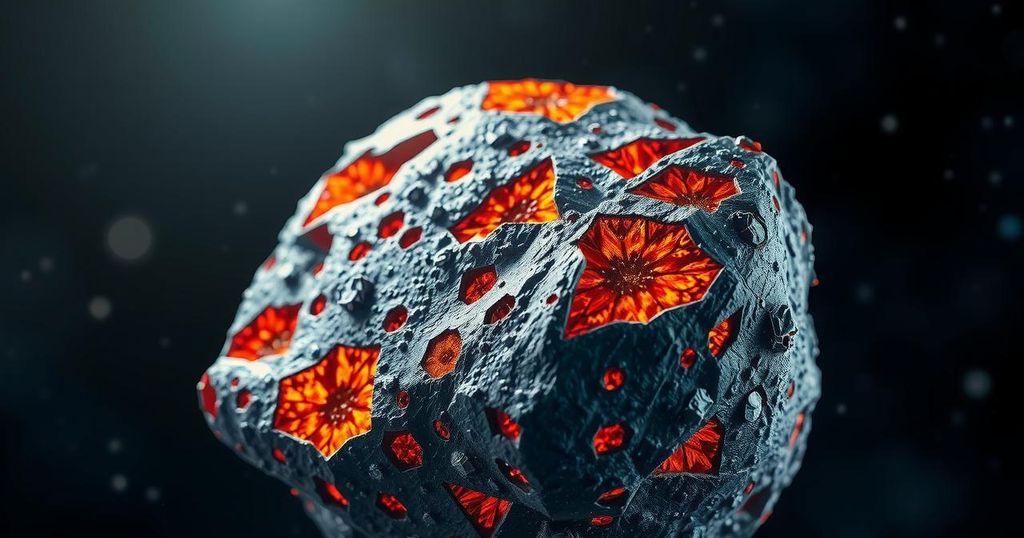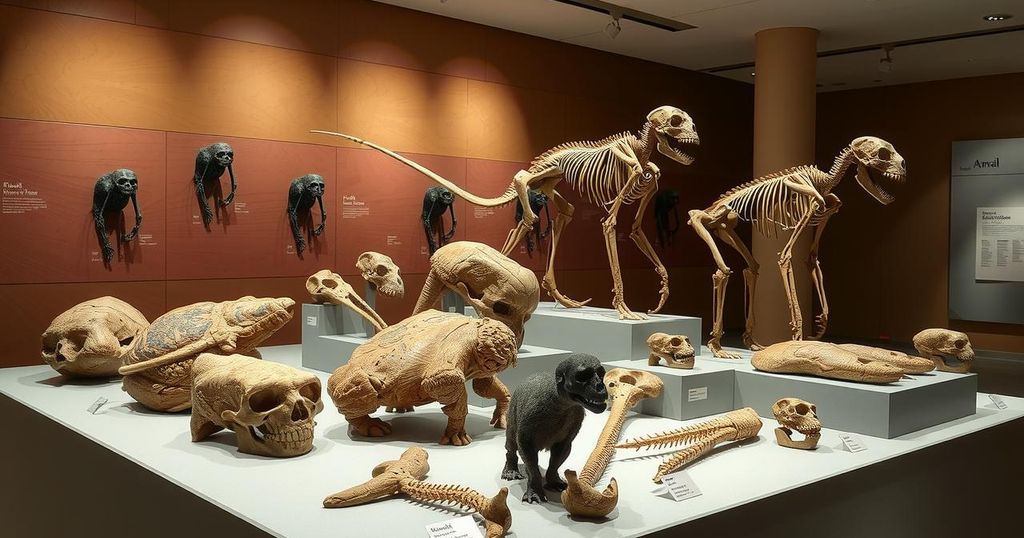Unearthing the Cosmic Origins of Meteorites: Tales from Asteroids
Recent research indicates that 70% of Earth’s meteorites trace back to a few significant collisions in the asteroid belt, particularly a major impact 470 million years ago. The findings, while providing valuable context for planetary formation, also suggest that our meteorite collection may be highly biased, representing only a fraction of the diverse materials available in space.
Recent studies reveal that a staggering 70% of Earth’s meteorites can be traced back to the aftermath of a handful of explosive collisions in the asteroid belt, nestled between Mars and Jupiter. One particularly cataclysmic event, occurring 470 million years ago, has provided pivotal insights into the origins of these cosmic rocks. Understanding where these meteorites come from aids scientists in reconstructing the solar system’s formative history, although it raises concerns about the potential bias of our meteorite collection, suggesting it only represents a small fraction of the vast trove of space materials.
The majority of meteorites falling to Earth are ordinary chondrites, with two specific types, H and L chondrites, constituting a significant percentage of meteorite discoveries. Research indicates that the L chondrites likely originated from a single parent asteroid, which was shattered in a catastrophic impact, unleashing a torrent of debris. Scientists employed radioactive decay analysis to confirm these origins and tracked their signatures back to a group of asteroids known as the Massalia family. Their formation is thought to have occurred shortly after this dramatic event, hinting that they share a common ancestry.
In addition to the L chondrites, the H chondrites were also examined, revealing a history tied to two separate significant collisions occurring millions of years apart. With further analysis, researchers connected these meteorites to two distinct asteroid families that once existed as single entities before being fragmented, symbolizing the violent past of the solar system.
Despite this instrumental progress in understanding meteorite origins, there is a looming concern regarding the representativeness of sampled meteorites. The asteroid belt houses an extraordinary variety of celestial formations, potentially containing myriad stories about the universe that remain untold due to the narrow focus of existing research. This complexity underscores the need for future exploratory missions to actively search for and gather a broader array of meteoritic samples that might unveil new cosmic truths.
Ultimately, the findings indicate a dynamic history where colossal impacts shaped not only the meteorites that occasionally grace our planet but also the very nature of the solar system we inhabit. While every meteorite serves as a piece of celestial history, its origin story may offer only a whisper of the grand narrative waiting to be uncovered.
The cosmic dance of asteroids continues to intrigue scientists, igniting a passion for deeper exploration beyond Earth’s atmosphere. Understanding where meteorites come from not only enriches our knowledge of planetary formation but also highlights the vast mysteries of space that still beg to be discovered.
Studying meteorites is foundational to understanding planetary formation and the history of our solar system. Meteorites, remnants of asteroids and other celestial bodies, can shed light on the violent history of early space. Particularly, stony meteorites, which account for the majority of collected samples on Earth, pose intriguing questions about their origins. Studies have emphasized how specific collision events, particularly in the asteroid belt, are linked to vast numbers of meteorites found on our planet today, shaping scientific knowledge.
The recent studies underline the importance of understanding the origins of meteorites in piecing together the solar system’s tumultuous history. By identifying key collision events, especially in the asteroid belt, scientists can better comprehend the processes that led to the formation of planetary bodies. However, this focus raises concerns about the bias inherent in our meteorite collections, suggesting a further need for exploration off-planet to enrich our knowledge of cosmic phenomena.
Original Source: www.sciencenews.org




Post Comment